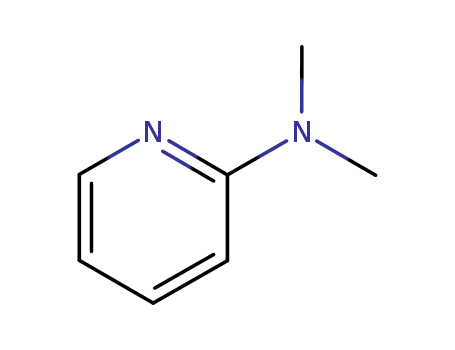10.1016/j.molstruc.2018.07.036
This research focused on the synthesis, characterization, crystal structure, and liquid crystal studies of symmetric naphthalene derivative molecules. The purpose was to investigate the mesomorphic properties of a series of symmetrical liquid crystals with a naphthalene core and long-chain flexible 4′-alkoxybenzoate moieties. The study aimed to understand the correlation between molecular structure and physical properties, particularly the effects of varying alkyl chain lengths on mesomorphic properties. The chemicals used in the synthesis included 2,6-dihydroxynaphthalene, 4-alkoxybenzoic acids, dicyclohexylcarbodiimide (DCC) as a coupling reagent, and dimethylaminopyridine (DMAP) as a catalyst. The synthesized compounds exhibited stable enantiotropic mesophases of Smectic A (SmA) and Nematic (N) phases, with the appearance of these phases being independent of the alkyl chain length. The molecular structure was determined using single crystal X-ray diffraction, revealing a dihedral angle between the naphthalene ring system and the benzoate moiety. The study concluded that the synthesized naphthalene derivatives are predominantly smectogenic and partly nematogenic, with the mesomorphic range of the smectic phase being shorter than that of the nematic phase.
10.1271/bbb.68.1097
The research details a study on the synthesis and evaluation of brassinosteroids, plant hormones known for their role in cell elongation and division, which are crucial for plant growth and stress resistance. The purpose of the study was to synthesize various brassinosteroids with different acyl side chains and assess their brassinolide-like activity, using the rice lamina inclination assay with synergist indole-3-acetic acid (IAA). The researchers concluded that the introduction of a hydroxyl group in the α-position to the carbonyl group of the ester structure significantly enhanced the activity, with 2β,3β-dihydroxy-17β-[(2R,3S)-2hydroxy-3-methylpentanoyl]oxy-B-homo-7-oxa-5β-androstan-6-one showing the highest activity. The study also found that the R-form of the acyl moiety was more potent than the S-form and that modifying the terminal structure did not increase activity. Chemicals used in the synthesis process included various steroidal compounds like pregnenolone and stigmasterol, as well as a range of reagents such as dicyclohexylcarbodiimide (DCC), dimethylaminopyridine (DMAP), and protective groups like tert-butyldiphenylsilyl (TBDPS).
10.1016/j.tet.2012.09.085
This research aims to synthesize highly functionalized β-aminocyclohexanecarboxylate stereoisomers from a bicyclic β-lactam through selective nitrile oxide dipolar cycloaddition. The process involves successive regioselective iodolactonization, stereo- and regioselective nitrile oxide cycloaddition, lactone ring-opening, and isoxazoline ring-opening. Key chemicals used include N-Boc-protected amino acids, NaHCO?, KI, I? for iodolactonization, DBU for dehydroiodination, NaOEt for lactone ring-opening, and acetonitrile N-oxide generated from nitroethane, di-tert-butoxycarbonylanhydride (Boc?O), and dimethylaminopyridine (DMAP) for cycloaddition. The study concludes that the rigid ring framework in unsaturated bicyclic amino lactones significantly enhances the reactivity of the C=C double bond compared to hydroxylated cyclohexene amino esters, leading to successful regio- and stereoselective cycloaddition. The synthesized compounds, with multiple stereocenters, are promising β-amino acid analogues of bioactive compounds like Tamiflu and Zanamivir.
10.1021/om00135a016
The research focuses on the synthesis and characterization of organometallic compounds, specifically metallacycles and titanium-carbene complexes. The purpose of the study was to prepare a titanacyclobutane precursor, which was then reacted with benzophenone to yield an organic product, and further reacted with phosphines to obtain phosphine adducts of an α-substituted titanium-carbene complex. The researchers also succeeded in creating a heterobimetallic alkylidene complex by reacting the metallacycle with dimethylaluminum chloride. The conclusions drawn from the study indicate that the observed reactivity of the metallacycle is consistent with productive cleavage of the metal-containing ring, leading to the formation of titanium-carbene complexes. The chemicals used in the process include 3,3-dimethylcyclopropene, Tebbe reagent, (dimethylamino)pyridine (DMAP), benzophenone, phosphines (PMeR2, where R = Me, Ph), and dimethylaluminum chloride, among others. The study provides insights into the reactivity of metallacycles and their potential as precursors to titanium-carbene compounds.






